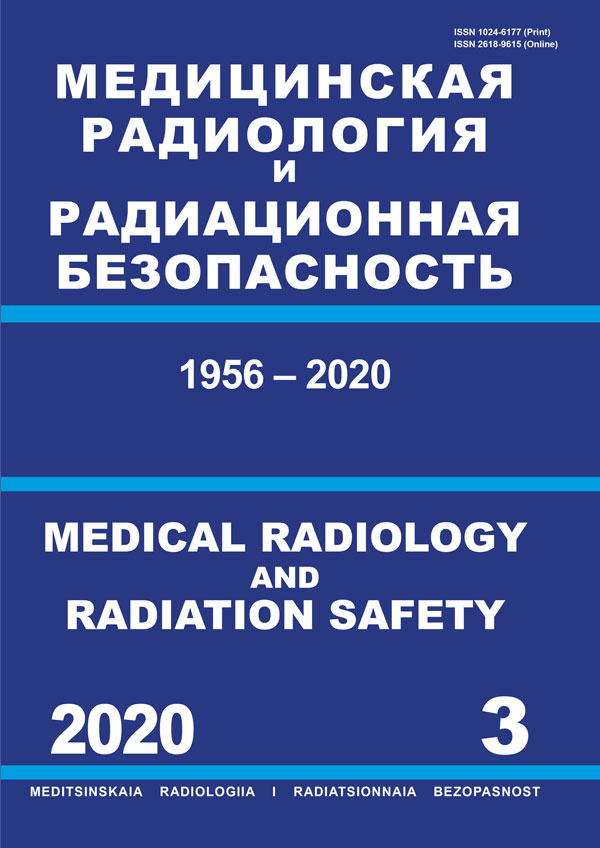State Scientific Research Institute of the Military Medicine (Senior Researcher)
Russian Federation
UDC 57
CSCSTI 34.49
Russian Classification of Professions by Education 14.02.02
Russian Library and Bibliographic Classification 58
Russian Trade and Bibliographic Classification 5712
BISAC MED080000 Radiology, Radiotherapy & Nuclear Medicine
BISAC SCI058000 Radiation
Purpose: Substantiate the main directions of transferring experimental data from laboratory animals to humans. Methods: The general patterns of the structure of the organism of animals and humans and the dynamics of the processes of their vital activity, including under the influence of various environmental factors, as well as the tendency of their approximation in the evolutionary series from lower mammals to humans are considered. Results: The choice of criteria and methods for assessing the state of the human body and comparison with those in animals in simulated situations is systematized according to 3 main levels – physiological-biochemical, neuropsychological and social. Parameters of physiological reactions, clinical laboratory and biochemical parameters are assigned to level 1, parameters characterizing the functions of higher nervous activity, neurodynamic reactions, targeted actions and psychological manifestations to level 2, characteristics of interpersonal interactions to level 3. The types, tasks and methods of research that are carried out on small rodent animals (screening) and on larger animals from other mammalian orders that are closer in terms of evolutionary development and other parameters to humans (in-depth) are considered. Conclusion: It is shown that when comparing the results of studies obtained in animal experiments and in human observations, it is important to use coefficients for the quantitative transfer of data from animals to humans, which require careful substantiation taking into account the interspecific characteristics of mammals and humans.
radiobiology, biomedical experiment, laboratory animals, extrapolation coefficients, parameters of physiological reactions, clinical and laboratory indicators, higher nervous activity, neurodynamic reactions, interpersonal interactions
1. Darenskaya NG. Comparison of dose-effect relationships for different species of animals and the significance of these data for humans. In: Radiobiological experiment and humans. Moscow: Atomizdat; 1970: 50-62. (In Russ.)].
2. Darenskaya NG, Ushakov IB, Ivanov IV, Ivanchenko AV, Nasonova TA. From experiment on animals - to the person: searches and decisions. Voronezh: Publishing House Science Book limited. 2010. (In Russ.)].
3. Krasovsky GN, Yegorova NA, Rakhmanin YuA. Extrapolation of toxicological data from animals to humans. Moscow: Meditsina. 2009. (In Russ.)].
4. Anokhin PK. Biology and neurophysiology of the conditioned reflex. Moscow: Meditsina. 1968. (In Russ.)].
5. Becker RA, Ankley GT, Edwards SW, Kennedy SW, Linkov I, Meek B et al. Increasing Scientific Confidence in Adverse Outcome Pathways: Application of Tailored Bradford-Hill Considerations for Evaluating Weight of Evidence. Regulatory Toxicology and Pharmacology. 2015; 72:514-37. DOI:https://doi.org/10.1016/j.yrtph.2015.04.004.
6. Becker RA, Dellarco V, Seed J, Kronenberg JM, Meek B, Foreman J et al. Quantitative weight of evidence to assess confidence in potential modes of action. Regulatory Toxicology and Pharmacology. 2017; 86: 205-20. DOI:https://doi.org/10.1016/j.yrtph.2017.02.017.
7. Boobis AR, Doe JE, Meek ME(Bette), Munn Sh, Ruchirawat M, Schlatter J et al. IPCS Framework for Analyzing the Relevance of a Noncancer Mode of Action for Humans. Critical Reviews in Toxicology. 2008. 38:87-96. DOI:https://doi.org/10.1080/10408440701749421.
8. Slikker WJr, Andersen ME, Bogdanffy MS, Bus JS, Cohen SD, Conolly RB et al. Dose-dependent transitions in mechanisms of toxicity. Toxicol. Appl. Pharmacol. 2004. 201 (3):203-25. DOI:https://doi.org/10.1016/j.taap.2004.06.019.
9. Seed J, Carney EdW, Corley RA, Crofton KM, DeSesso JM, Foster PMD et al. Overview: Using Mode of Action and Life Stage Information to Evaluate the Human Relevance of Animal Toxicity Data. Critical Reviews in Toxicology. 2005; 35:663-72. DOI:https://doi.org/10.1080/10408440591007133.
10. Meek ME, Boobis A, Cote I, Dellarco V, Fotakis G, Munn S et al. New developments in the evolution and application of the WHO/IPCS framework on mode of action/species concordance analysis. J. Appl. Toxicol. 2014; 34 (1): 1-18. DOI:https://doi.org/10.1002/jat.2949.
11. Sonich-Mullin C, Fielder R, Wiltse J, Baetcke K, Dempsey J, Fenner-Crisp P et al. IPCS Conceptual Framework for Evaluating a Mode of Action for Chemical Carcinogenesis. Regulatory Toxicology and Pharmacology. 2001. 34: 146-52. DOIhttps://doi.org/10.1006/rtph.2001.1493.
12. Meek ME(Bette), Bucher JR, Cohen SM, Dellarco V, Hill RN, Lehman-McKeeman LD et al. A Framework for Human Relevance Analysis of Information on Carcinogenic Modes of Action. Critical Reviews in Toxicology. 2003; 33 (6): 591-653. DOI:https://doi.org/10.1080/10408440390250136.
13. Becker RA., Patlewicz G, Simon TW, Rowlands JC, Budinsky RA. The adverse outcome pathway for rodent liver tumor promotion by sustained activation of the aryl hydrocarbon receptor. Regulatory Toxicology and Pharmacology. 2015; 73: 172-90. DOI:https://doi.org/10.1016/j.yrtph.2015.06.015.
14. Lynch HN, Loftus CT, Cohen JM, Kerper LE, Kennedy EM, Goodman JE. Weight-of-evidence evaluation of associations between particulate matter exposure and biomarkers of lung cancer. Regulatory Toxicology and Pharmacology. 2016; 82:53-93. DOI:https://doi.org/10.1016/j.yrtph.2016.10.006.
15. Ivanov IV. Methods of evaluation of efficiency of laboratory animals in the experimental influence of pathogenic and extreme factors. Voenno-meditsinskiǐ zhurnal. 2012; 333 (2): 42-7. (In Russ.)].
16. Shustov EB, Karkischenko NN, Uiba VV, Karkischenko VN. Sketches of sports pharmacology. V. 1. Extrapolation vectors. Saint Petersburg: OOO «Aysing». 2013. (In Russ.)].
17. Ushakov IB, Shtemberg AS, Shafirkin AV. Reactivity and resistance mammalian organism. Moscow: Nauka. 2007. (In Russ.)].
18. Ivanov IV. Initial reactivity of organism and radiation effects: medical-prophylactic aspects of the problem. Moscow, 2005. (In Russ.)].





